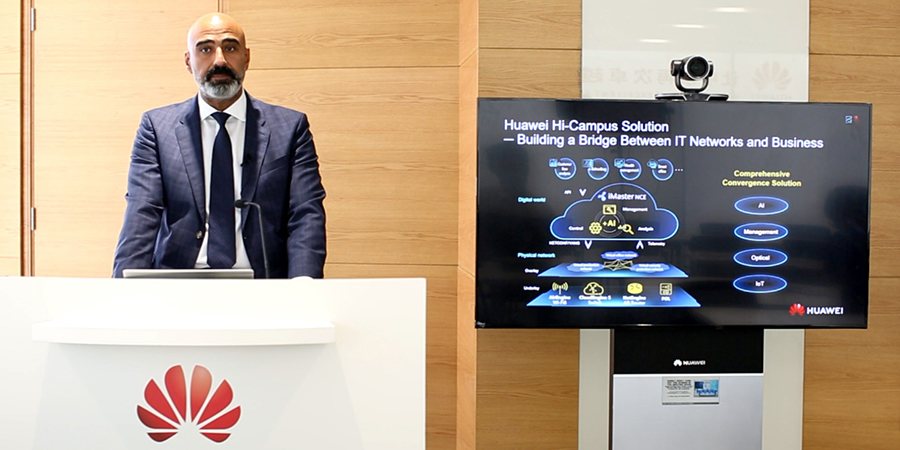By Alaa Bawab, vice president for Enterprise Networking Business for Huawei Middle East
As we continue to adjust to the new, temporary ‘normal’ caused by the COVID-19 pandemic, one thing becomes increasingly clear: technology is more of an enabler in times like these than ever before. 5G in particular is a rising star, offering enhanced, reliable, secure and versatile connectivity at a time when people turn to technology to not only stay connected, but to further enhance our connected world in ways that matter during these unprecedented times.
The use cases for 5G are practically unlimited, but there are certain sectors that can stand to benefit more in current circumstances, such as healthcare, education, scientific research and manufacturing, to mention a few. In particular, there is strong potential for 5G to augment the health sector.
There has been an increase in the adoption of wireless internet in medical devices, and connected solutions are becoming more commonplace – like remote diagnosis and remote surgery, while a high percentage of the community is using wearables and portable devices for health monitoring purposes. These were possible on 4G networks, but 5G, with its greater reliability, lower latency and supporting more number of connected devices – to name just few benefits – will enhance the potential of connected medical solutions even further.
The existing exploration into telemedicine can be taken so much further by 5G, given its reliability and guaranteed quality of service, ensuring real-time connectivity between doctor and patient. Imagine, for example, artificial intelligence (AI)-enabled medical systems connected by 5G, with contactless accessibility that will protect both medical staff and other patients from being exposed to COVID-19 or other contagious illnesses.
There is also the opportunity for the healthcare sector to use 5G to develop a fully personalized medical advisory service, which can be embedded into hospital call-in centers, home medical advisory assistants, local doctor clinics and remote, unstaffed clinics. 5G can enable the introduction of health management systems that track patients and their medical records, recommend treatments and appropriate medicines, and even set-up follow-up appointments. Such a system could perhaps help to keep track of patients who test positive for COVID-19 but do not require in-hospital treatment, helping to free up precious resources at a time when every nurse, doctor and bed is needed more than ever. Proactive monitoring using AI models on cloud and connected through 5G can suggest changes to treatment plans, giving medical staff a heads up that an ill patient may need to be admitted to hospital or that they are recovering. With the potential to use 5G to seamlessly run AI and virtual reality simulations, anything is possible.
5G can be used to improve other sectors, too, as mentioned previously. In education, for example, 5G can boost learning in the classroom and at home by providing seamless connectivity that enables virtual reality, augmented reality and many other technology-based educational tools. The benefits of 5G to scientific research speak for themselves: lower latency, higher density and greater reliability all go hand-in-hand with improving circumstances for computer-aided research. It’s said that every dollar invested in making manufacturing plants more digital and intelligent can stimulate ten dollars in growth, so 5G will enable the manufacturing sector to flourish and improve productivity, amongst many other benefits.
Transitioning towards smart healthcare and a smarter society in general, requires partnerships – between technology developers and telecommunications providers, healthcare professionals and the community as a whole. The need to develop this ecosystem is currently clearer than ever, to usher in the next generation of healthcare solutions that will help medical professionals to protect our society even more than they currently do.











